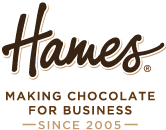Ballotin of chocolates – A particular style and shape of chocolate box originally from Belgium.
Bittersweet chocolate – Usually sweetened dark chocolate with 70% or more Cacoa solids. This chocolate usually has intense Cacoa flavour.
Cacao – Seed pod from which Cocoa and chocolate are made from the tree of the Theobroma Cacao.
Cacoa Plantation – The place where the Theobroma Cacao trees grow.
Chocolate – A food made from roasted and ground cocoa seeds, usually sweetened.
Chocolates – Confections made from chocolate such as pralines and truffles.
Chocolatier – A person or company who makes confectionery from chocolate.
Cocoa – A powder made from crushed Cacoa seeds, often mixed with milk to make a hot drink.
Cocoa bean – Seeds from the pod, or fruit, of the Theobroma cacao tree.
Cocoa butter – A substance obtained from cocoa beans, used in confectionery but also can be used in cosmetics.
Cocoa content (or Cacao content) The percentage Cacoa in the finished chocolate. Usually the higher the Cacoa content the more intense the flavour.
Conching – When the cocoa bean has been broken down into chocolate liquor or paste the paste is then refined through uninterrupted stirring or conching.
Criollo – A species of Cocoa tree. Produces small harvests and is very fragile. The prince of Cacoa trees.
Dark Chocolate – Contains a higher % of Cacoa per chocolate bar, usually less sweet than other chocolate. The trend for dark chocolate has demanded that a good dark chocolate has a high cocoa solid content although coca solids above 70% may be unpalatable to many and be perceived as too bitter.
Enrobing – The process of covering a product with chocolate.
